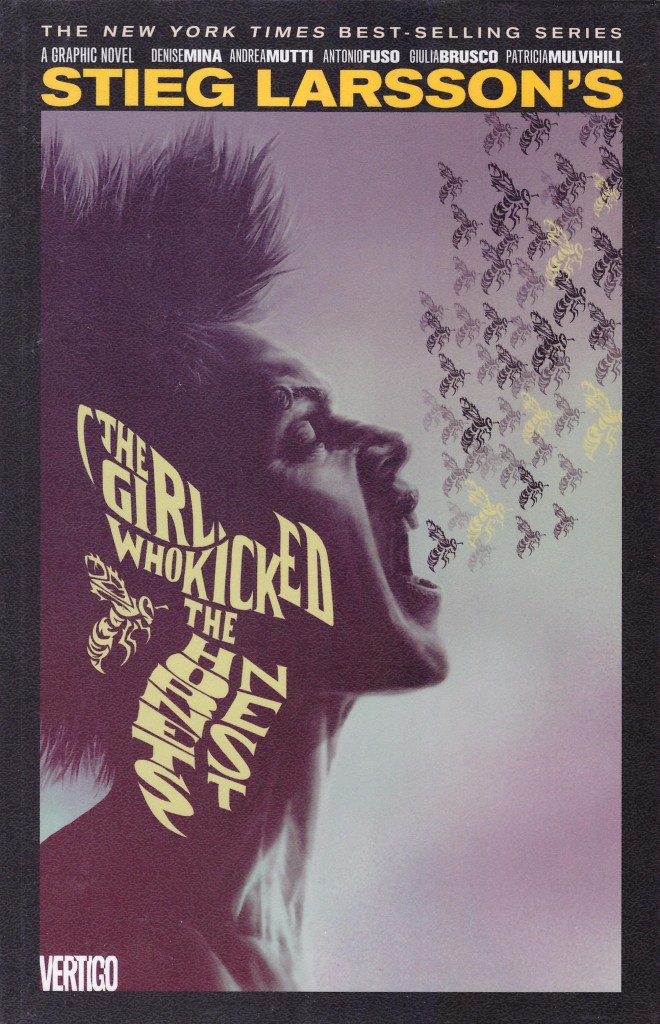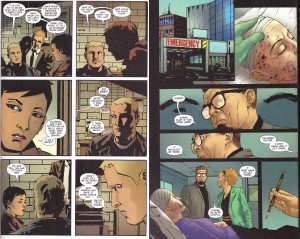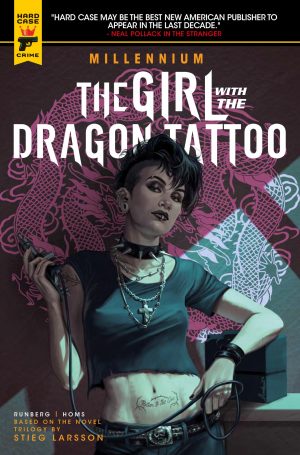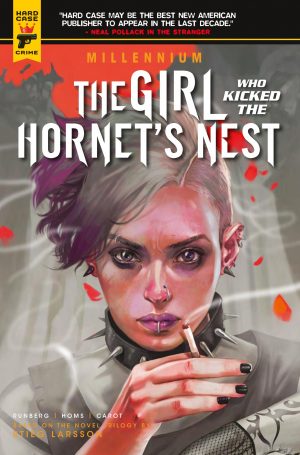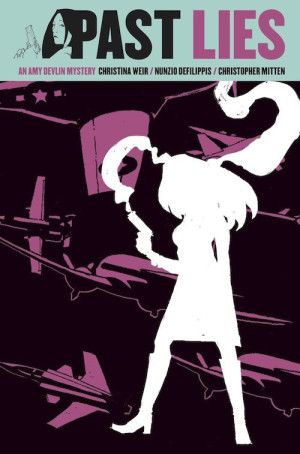Review by Frank Plowright
This third story of Lisbeth Salander throws us into the middle of a crisis, caused by her actions concluding the previous graphic novel The Girl Who Played With Fire. It also becomes apparent that despite breaking down into three separate novels (or four graphic novels as The Girl With the Dragon Tattoo was split over two books), Steig Larsson has plotted one continuing story. We continue to delve back into Salander’s past, now revealed as entwined with some very murky events that would have grave consequences for the establishment if publicised.
In story terms this is better than the previous books. For all the improvement, however, Larsson’s plot takes the idle route so frequently. The investigative side of matters begins to spread a wide net, with an uncertainty as to who can be trusted, while the titular girl is the subject of tension. Provided little thought is applied. If it is, the tension is revealed as artificially generated. For much of the first third of the book Salander is in hospital, where another patient, their relationship and status known to the authorities, poses a constant threat. An online search verifies the presence of several hospitals in Gothenburg, so either Larsson is taking plot shortcuts or he’s suggesting Swedish police security arrangements are truly lax. It’s not the only plot hole. Another is elite secret police who apparently believe stealing physical copies of paperwork ensures distribution will cease. Larsson’s stand-in, rumpled middle-aged journalist Mikael Blomqvist again falls into bed with every woman he meets.
Leonardo Manco is no longer part of the art team, so Andrea Mutti and Antonio Fuso now share the load. Mutti has a broadly naturalistic look, while Fuso’s more jagged work is a complete contrast. Why the series requires two artists is questionable, as either illustrating the book alone would have been preferable to the neither fish nor fowl styles employed. As it is, Fuso’s darker and more atmospheric page layouts are the more suitable, but as previously there’s the occasional difficulty in recognising what’s supposed to be the same character under the different artists. The editors haven’t even picked up the same person wearing different clothes in what’s ostensibly the same scene as the artists switch.
There may be some disappointment that although she’s the focus of everything that occurs, for this conclusion of her story Salander is barely proactive. Her confinement for almost the entire story means that her unconventional activities and methods are removed as a source of entertainment and suspense, while Larsson’s complicated plot shines a light on the investigated and their covert meetings as well as the investigators. Denise Mina adapts this very well, occasionally undermined by the inability of the artists to distinguish a broad cast sufficiently.
The concluding sequence switches from procedural investigation to courtroom drama, which has a suspense and retributive elation completely contrasting the largely anonymous arrests with which it’s spliced.
Anyone who’s followed Salander’s story so far is presumably going to want to read the remainder, but like the previous books, the sophisticated elements are frustratingly hampered by cliché and convenience. That, however, is down to what Mina chose to keep from the original books, and a far tighter series adapting Larsson’s work was produced by Sylvain Runberg and first published in France. See recommendations.
